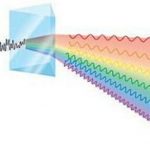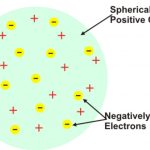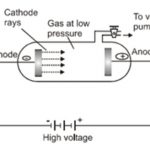Electromagnetic spectrum The electromagnetic spectrum consists of radiation of different wavelength and frequency. An instrument used to separate the radiations of different wavelength is called spectroscope or spectrograph. A spectroscope consists of a prism or a diffraction grating for the dispersion of radiation and a photographic film to examine the emergent … [Read more...] about Absorption and Emission Spectra
Structure of Atom
Electromagnetic Wave Theory
Electromagnetic wave theory This theory was put forward by James clark Maxwell in 1864. The main points of this theory are: 1)The energy is emitted from any source continuously in the form of radiations and is called the radiant energy. 2)The radiations consist of electric and magnetic fields oscillating perpendicular to each other and both perpendicular to the … [Read more...] about Electromagnetic Wave Theory
Rutherford’s Model of an Atom
Thomson's model of atom J.J. Thomson in 1904, proposed that an atom was a sphere of positive electricity in which were embedded number of electrons. The stability of the atom was explained as a result of the balance between the repulsive forces between the electrons and their attraction towards the centre of the positive Sphere.This model is compared with a watermelon … [Read more...] about Rutherford’s Model of an Atom
Discovery of Proton
Since the atom as a whole is electrically neutral and the presence of negatively charged particles in it was established ,therefore, it was thought that some positively charged particles must also be present in the atom. Goldstein in 1886 performed discharge tube experiment in which he took perforated cathode and a gas at low pressure was kept inside the tube, as … [Read more...] about Discovery of Proton
Discovery of Electron
William crookes in 1879 studied the conduction of electricity through gases at low pressure. EXPERIMENTAL SET UP 1) He took a discharge tube which is a long glass tube, sealed at both the ends and fitted with two metal electrodes. 2) It has a side tube fitted with a stop cock which can be connected to a vacuum pump to reduce the pressure of the gas inside to any … [Read more...] about Discovery of Electron


